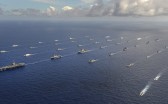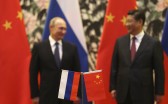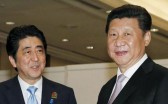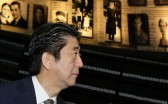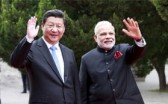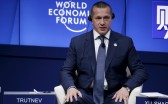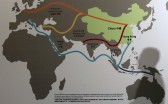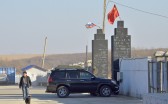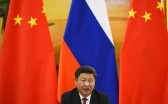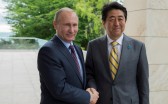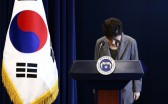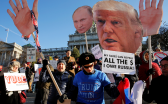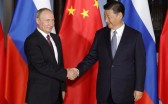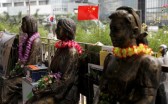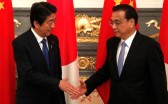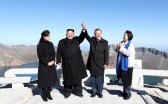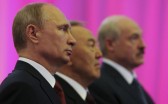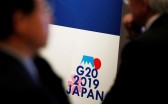2019, which began with high hopes for progress in nuclear talks, is coming to an end amid escalating tensions on the Korean Peninsula. Contrary to expectations, there was no “Christmas surprise” from North Korea. However, North Korea’s state-run media reported on December 22 that Chairman Kim held an expanded meeting of the Central Military Commission of the North’s ruling Workers’ Party to discuss ways to enhance the regime’s military capabilities. This news has led some to argue that the North is signaling a possible return to a policy focusing more on military buildup than economic development. There has also been speculation that North Korea may abandon diplomacy with the US and launch either a long-range missile or a satellite-carrying rocket if Washington does not accept its demand for new incentives to salvage faltering nuclear negotiations.1 On December 12, North Korea criticized the US for convening a UN Security Council meeting, saying the “provocative act” helped it to decide which path to take in the deadlocked nuclear talks.2
The apparent status quo in 2019 was in fact far from a status quo, and the situation will become worse. The personal relationship between President Trump and Kim aside, North Korea and the US are locked in a cycle of provocations and sanctions. This is because the current negotiations do not cover North Korea’s research and development of weapons capabilities. North Korea has continued to push ahead with its missile programs even as it has pursued dialogue with Washington, expanding a major missile-manufacturing facility in Hamhung.3North Korea’s Sinpo South Shipyard showed movements that indicate construction of a new ballistic missile submarine.4 The regime also restored the Tongchang-ri missile launching site, which it dismantled last year following an agreement made at one of the inter-Korean summits. Facing the dilemma of disarmament, North Korea is bound to be sensitive to the changes in the military balance that will result from giving up its nuclear program, making it likely to become further dependent on its other military capabilities. Hence, it is in North Korea’s interest not to stop increasing deterrence against the South.
The biggest hurdle to progress in nuclear diplomacy between North Korea and the US is the difference in their positions on the “end-state” and “trade-offs” between the two sides. However, it is not likely that future talks will result in a narrowing of the gap between the positions of the US and North Korea on denuclearization. It is also hard to expect that inter-Korean projects will play any real role in bringing North Korea back to the negotiating table and ensuring it becomes a responsible member of the international community for the following reasons.
Rigid win-sets
Considering that the negotiations between the US and North Korea reflect the simultaneous imperatives of both international and domestic political games, Trump is not free from internal constraints, and neither is Kim. At the national level, the domestic audience pressures the government to adopt favorable policies, while national governments sitting at the international table seek to maximize their ability to satisfy domestic pressures.5 In order to secure support from Congress to ensure the sustainability of the implementation of any deal, Trump needs to make a successful agreement without significant modifications to the bipartisan demand for comprehensive elimination of WMD threats from North Korea. The public in North Korea may react differently to Kim’s foreign policy with respect to their democratic counterparts, but the leadership in Pyongyang cannot be entirely immune from political costs. Hence, Kim has to be concerned about the potential failure of the strategic shift toward economic recovery made at the Korean Workers’ Party’s plenary meeting on April 21, 2018. The urgent need to lift sanctions for the North Koreans places the leadership in a situation where North Korea keeps asking the US to take “corresponding measures” as a means to prove US commitment in continuing genuine dialogue on denuclearization. This situation will continue to leave the two sides at an impasse.
Washington’s winning strategy may include the following. First, the US can continue to emphasize that it does not have any flexibility in changing the range of options and ask the North Koreans to back down. Second, the US convinces North Korea that it is less worried about the costs of no agreement. Third, it can appoint a very skillful negotiator and make dealing with the situation on the Korean Peninsula a priority. Fourth, it can foster discord among people in the North to promote heterogeneous interests in the denuclearization negotiation. However, these options may exist only in theory. The fact that North Korea increasingly emphasizes “self-reliance” indicates that although the economy is under stress, the regime has apparently chosen to muddle through the situation rather than back down. Furthermore, the return of overseas North Korean workers in compliance with UN Security Council Resolution 2397 will create challenges to the North Korean regime not only in seeking alternative sources of revenue, but also in monitoring those who have been exposed to the outside world. Under the circumstances, the leadership in Pyongyang needs to further promote internal unity, keeping its win-sets rigid.
Structural problems
North Korea argues that the US threatens North Korean’s “right to life” and “right to development.” That is, North Korea considers a security guarantee and sanctions relief key agenda items for negotiations with the US. North Korea reacted sensitively to the US-South Korea command post exercise and even delayed working-level negotiations for this reason in August. The regime has made ongoing calls for the complete discontinuation of such training beyond temporary curtailment or postponement of each exercise. It also clarified its refusal to continue allowing high-tech weapons such as the US stealth fighter F-35A to be brought into the South. Alliance issues have become entangled in the process of denuclearization talks. This makes South Korea a key player. However, the South Korean government, which has played the role of facilitator during times of crisis, is not having an easy time creating a positive environment for negotiations.
The key is not willingness to get through the current situation, but rather a structural issue. South Korea began taking steps toward transfer of wartime operational control (OPCON) from the United States to South Korea as inter-Korean relations improved and denuclearization talks resumed. This requires South Korea to take greater responsibility for safeguarding its own national security and effectively ensuring the combined defense posture, and accordingly South Korea plans to augment its existing forces and develop new capabilities, including F35 fighter aircraft. Besides, US-South Korea joint military exercises are an integral part of completing the preparations necessary to exercise OPCON in accordance with the Conditions-based OPCON Transition Plan. At the 51st Security Consultative Meeting (SCM) on November 15, the US and South Korea pledged to pursue a Full Operational Capability (FOC) assessment for the future CFC (Combined Forces Command) in 2020 and to implement necessary measures for the certification assessment, including the development of strategic documents. Hence, the importance of the joint exercises has only further increased.
UN sanctions on North Korea will continue to pose a challenge to advancing inter-Korean relations. In addition, it is hard for South Korea to seek the granting of exemptions for inter-Korean projects. The US and South Korea have run a working group to discuss general issues related to denuclearization negotiations with North Korea since November 2018. The officials from South Korean ministries involved in the working group include those in charge of inter-Korean exchanges and cooperation at the Ministry of Unification as well as officials from the Blue House. As the two sides share in both preparations for high-level North Korea-US talks and also developments on the Korean Peninsula, the efforts to resolve differences between the two sides concerning advancements in inter-Korean relations and North Korea sanctions have ended up limiting South Korea’s flexibility in deciding how to handle issues on the Korean Peninsula.
China and Russia have repeatedly expressed hope for a restart of North Korea-US talks. However, they may also exert a limited role in reducing tensions between Pyongyang and Washington. When it comes to nuclear issues, North Korea has made its decisions independently from pressure from its neighboring countries. Russia and China recently submitted a draft resolution to the UN Security Council calling for a partial lifting of sanctions on North Korea. The draft resolution calls for rewarding North Korea for two years of restraint in testing ICBMs and nuclear weapons. It should be noted that China and Russia submitted the resolution when it was already obvious that it would be vetoed by the other permanent members of the Security Council. The implied message to the US may be that it is the US which should take all of the blame if North Korea attempts any major provocations as efforts to find a diplomatic solution to de-escalate the situation on the Korean Peninsula fail.
North Korea’s next move
Now the question is what lies ahead for nuclear talks. With impeachment proceedings against Trump currently underway, there is speculation that any high-level provocations from North Korea during this period may elicit a strong response from him. North Koreans may keep a close eye on US impeachment proceedings and election developments so that they can take full advantage of whatever the outcome is. It must be aware of the US red line. Conceptually, provocations are what is done when there is political gain to be had. The North Korea-US negotiations rely on the personal relations between Kim and Trump, so the North’s scrapping of its commitments to not test ICBMs and nuclear weapons would mean that its only chance at US-North Korea negotiations is blown. Therefore, North Korea is likely to divide its future moves into various stages, beginning with strategic communications at the start of the new year. Unfortunately, North Korea is not a major issue in the upcoming US presidential election. Therefore, the importance of the North Korean issue will be further lowered. Against this backdrop, Pyongyang is likely to continue its attempts to attract attention from Washington. Ultimately, the possibility of whether North Korea will attempt a provocation depends on the US response.
1. Hyung-jin Kim, “Kim Jong Un holds party meeting to bolster North Korean military,” Military Times, December 23, 2019.
2. Jesse Johnson, “North Korea says U.S. criticism has helped it make decision on stalled nuclear talks,” The Japan Times, December 12, 2019.
3. Jonathan Cheng, “North Korea Expands Key Missile-Manufacturing Plant,” The Wall Street Journal, July 1, 2018.
4. Joseph Bermudez and Victor Cha, “Sinpo South Shipyard: Construction of a New Ballistic Missile Submarine?” 38 North, August 28, 2019.
5. Robert D. Putnam, “Diplomacy and Domestic Politics: The Logic of Two Level Games.” International Organization Vol. 42, No. 3 (Summer 1988), pp. 427-460.
